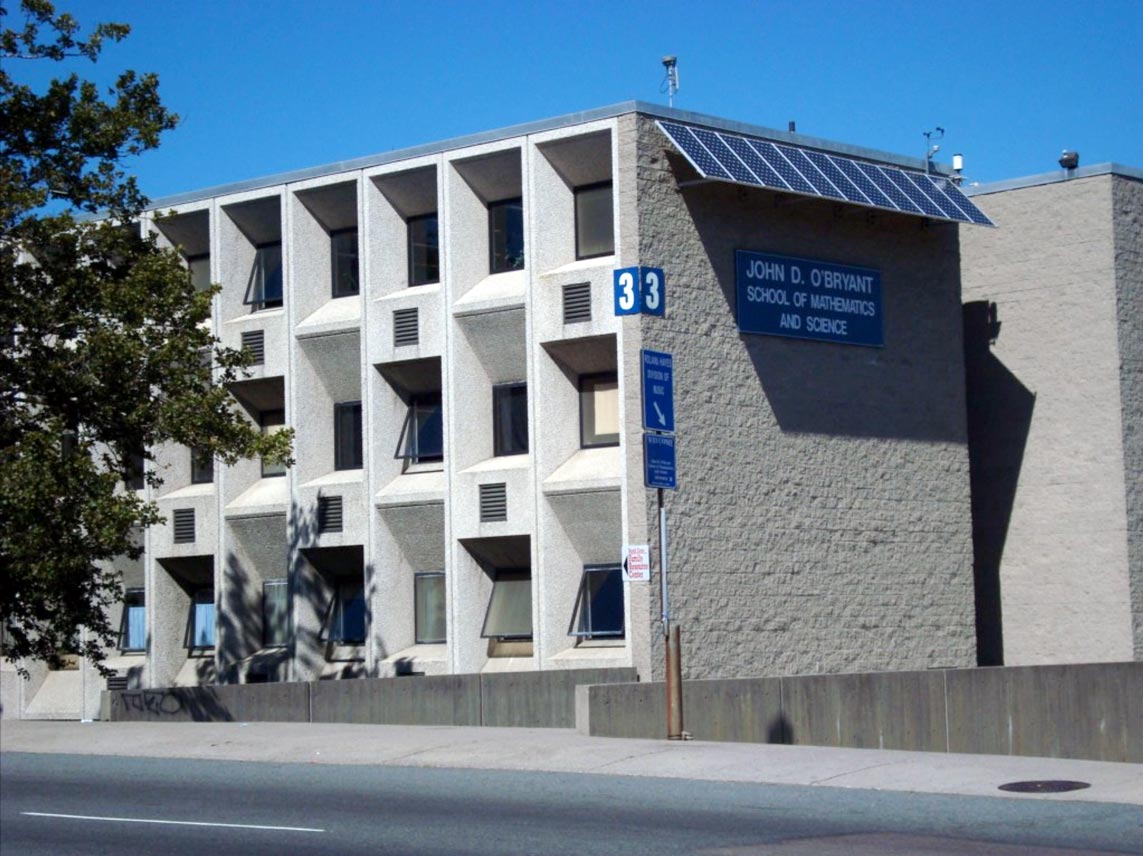The John D. O’Bryant School of Math & Science, located in Roxbury, Massachusetts, recently underwent a second phase of improvements. This phase involved the construction of a new main entryway along Malcolm X Boulevard as well as a new stair tower and access ramp located at the rear of the building.
The soil conditions in the area of the stair tower consisted of 9 feet of clay FILL over stiff marine CLAY followed by bedrock at about 20 feet.
Ductile Iron Piles proved to be the most cost-effective solution to support the heavily-loaded stair tower addition to the existing building which was situated on urban fill.
Construction of the new stair tower addition for the three-story building imparted heavy loads on the new foundations. Conventional spread footings could not be used because of the presence of urban fill. The geotechnical consultant considered overexcavation and replacement of the fill, but ruled it out because of the excavation depths and access issues. The recommended foundation support solution was small diameter (9-inch) drilled micropile with capacities of 20 tons. The micropiles were spectified to terminate in the stiff marine clay with lengths of 20 feet.
In addition to proposing on the specified micropile work scope, Helical Drilling also worked with the geotechnical engineer and general contractor to provide a cost-saving alternative using end-bearing Ductile Iron Piles (DIPs) to reduce the foundation support costs by more than 50 percent. DIPs were used at a one-for-one replacement for the specified micropile due to expediency in the design despite having allowable DIP capacities approaching 50 tons (Series 118/7.5). The DIPs were designed with lengths of 15 feet. Installations terminated in the stiff clay or at the top of rock with lengths ranging from 15 to 27 feet. The 5-meter long Ductile Iron Piles easily handled the variation in plan lengths with the Plug and Drive rapid connection.
A non-production Ductile Iron Pile was load tested up to 300% of the design load of 40 kips. A deflection of about 0.1 inch was recorded at the 40 kip design load (100%). Deflections of less than 0.3 inches were measured at 120 kips, 300% of the design load. The response was nearly perfectly elastic consistent with elastic shortening of the end-bearing pile.
Ductile Iron Piles can address a variety of geotechnical challenges:
- Variable grades
- Adjacent structures
- Vibrations
- Difficult access
- Constrained sites
- Low overhead
- Poor soil conditions




